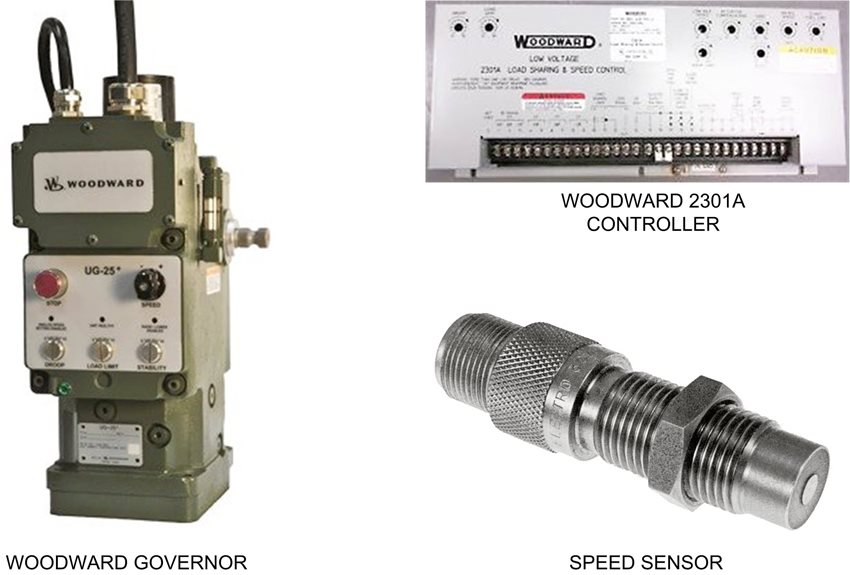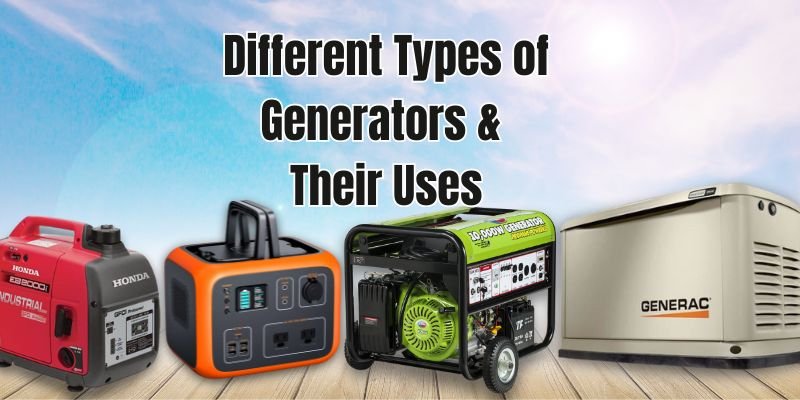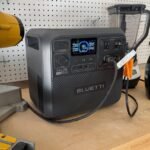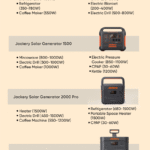Disclosure: This post contains affiliate links and I will be compensated if you make a purchase after clicking through my links. Learn More
To adjust the generator governor speed, locate the governor control and turn the adjustment screw. Test the generator to ensure correct speed.
Generators require precise speed control for optimal performance. The governor controls the engine speed, ensuring stable electricity output. Incorrect governor settings can lead to fluctuating power, which may damage sensitive equipment. Adjusting the governor speed involves fine-tuning the adjustment screw while monitoring the generator’s performance.
Regular maintenance and proper adjustments ensure reliable operation and extended generator life. This guide provides a straightforward approach to adjusting the governor speed, highlighting the importance of accuracy and consistency. Follow these steps to maintain your generator’s efficiency and avoid potential power issues. Properly adjusted governors are key to stable and dependable generator performance.
Introduction To Generator Governor Speed
Generators require precision to function properly. One critical aspect is the governor speed. The governor controls the generator’s engine speed. It ensures a steady and reliable power output. Adjusting this speed can optimize performance and efficiency.
Importance Of Proper Speed
Maintaining the correct governor speed is essential. It ensures stable power delivery to connected devices. Proper speed prevents engine wear and tear, extending the generator’s lifespan. It also helps in fuel efficiency, reducing operational costs.
Common Issues With Speed Settings
Incorrect speed settings can cause various problems. Here are some common issues:
- Overloading: The generator may become overloaded and shut down.
- Power Fluctuations: Inconsistent power supply can damage connected devices.
- Increased Fuel Consumption: Incorrect speed settings can lead to higher fuel usage.
- Engine Damage: Improper speed can cause engine overheating and damage.
Addressing these issues as soon as possible. Regular maintenance and correct speed adjustments can help avoid these problems.

Tools And Materials Needed
Adjusting a generator governor speed requires specific tools and materials. Using the right equipment ensures the process is smooth and safe. Below is a detailed list of the essential and optional items needed.
Essential Tools
You need these tools to adjust the generator governor speed:
- Wrench Set: Various sizes for different bolts.
- Screwdrivers: Both flathead and Phillips types.
- Multimeter: For measuring electrical values.
- RPM Meter: To check the generator speed.
- Flashlight: For better visibility in dark areas.
- Safety Gloves: Protect your hands while working.
Optional Accessories
These accessories can make the adjustment process easier:
- Torque Wrench: Ensures bolts are tightened correctly.
- Magnifying Glass: Helps see small parts clearly.
- Adjustable Pliers: Useful for gripping and turning.
- Work Light: Provides extra lighting in dim areas.
- Portable Fan: Keeps you cool while working.
| Tool | Purpose |
|---|---|
| Wrench Set | For tightening and loosening bolts |
| Screwdrivers | For adjusting screws |
| Multimeter | Measures electrical values |
| RPM Meter | Checks generator speed |
| Safety Gloves | Protects your hands |
| Torque Wrench | Ensures bolts are tightened properly |
Safety Precautions
Adjusting the generator governor speed requires strict safety measures. Following these safety precautions ensures a safe and successful operation. Let’s dive into the necessary steps.
Personal Protective Equipment
Wearing the right personal protective equipment (PPE) is crucial. Here are the items you need:
- Safety glasses to protect your eyes from debris.
- Gloves to protect your hands from sharp objects.
- Ear protection to shield your ears from loud noises.
- Steel-toe boots for foot protection.
- Fire-resistant clothing to prevent burns.
Safety Procedures
Follow these safety procedures to ensure a smooth operation:
- Turn off the generator before starting any adjustments.
- Ensure the generator is on a flat and stable surface.
- Check for any leaks or damages in the generator.
- Use a multimeter to check for electrical hazards.
- Keep a fire extinguisher nearby for emergencies.
Following these precautions helps you stay safe and efficient. Adjusting the generator governor speed becomes easier with these steps. Always prioritize safety.
Locating The Governor
To adjust the generator governor speed, first, locate the governor. This component controls the generator’s engine speed. Understanding its position and accessing it is crucial for proper adjustments.
Understanding The Governor’s Position
The governor is typically near the engine. It connects to the throttle and regulates fuel flow. Find it by tracing the throttle linkage. This linkage usually leads directly to the governor.
Refer to your generator’s manual. The manual often has diagrams. These diagrams show the exact location of the governor. If you do not have a manual, check online. Many manufacturers provide downloadable manuals on their websites.
Accessing The Governor
Once you have located the governor, access it carefully. Follow these steps:
- Turn off the generator. Ensure it is cool before touching.
- Remove any protective covers. These covers might conceal the governor.
- Use appropriate tools. A screwdriver or wrench might be needed.
If the governor is hard to reach, consult a professional. Safety is paramount when working with generators.
Here is a simple table for quick reference:
| Step | Action |
|---|---|
| 1 | Turn off the generator |
| 2 | Ensure the generator is cool |
| 3 | Remove protective covers |
| 4 | Use appropriate tools |
By following these steps, you can safely locate and access the governor. Adjusting the governor speed will then be much easier.
Preparing The Generator For Adjustment
Before adjusting the generator governor speed, proper preparation is crucial. This step ensures a smooth adjustment process and minimizes risks. Follow these key steps to get the generator ready.
Shutting Down The Generator
Safety first. Ensure the generator is completely shut down. Follow these steps:
- Turn off all connected appliances.
- Switch off the generator using the main control.
- Disconnect the generator from the fuel supply.
- Allow the generator to cool down completely.
Never adjust a running generator. This step protects you from electric shocks and burns.
Inspecting For Damage
Before any adjustments, inspect the generator for visible damage. This step ensures the generator is in good condition.
| Area | What to Check |
|---|---|
| Fuel Lines | Look for leaks or cracks. |
| Wiring | Check for frays or exposed wires. |
| Engine Components | Ensure bolts and nuts are tight. |
| Governor Linkages | Inspect for wear or damage. |
If you find any issues, address them before proceeding. This step prevents further complications.
Adjusting The Governor Speed
Adjusting the governor speed on a generator is crucial. It ensures the generator runs efficiently. This process helps maintain the desired speed. Incorrect speed can cause damage or inefficiency. Follow these steps to adjust the governor speed effectively.
Step-by-step Adjustment Process
Turn off the generator: Ensure the generator is off before starting.
Locate the governor: Find the governor near the engine.
Loosen the lock nut: Use a wrench to loosen the lock nut.
Adjust the screw: Turn the screw to increase or decrease speed.
- Turn clockwise to increase speed.
- Turn counterclockwise to decrease speed.
Tighten the lock nut: Secure the lock nut after adjusting.
Restart the generator: Turn on the generator to test adjustments.
Testing The Speed
After adjusting the governor, test the generator speed. Ensure it runs smoothly.
| Step | Action | Expected Result |
|---|---|---|
| 1 | Start the generator | Generator runs without issues |
| 2 | Use a tachometer | Check RPM levels |
| 3 | Compare RPM | Match desired speed |
| 4 | Listen for noise | Generator runs quietly |
Ensure the generator’s RPM matches the desired speed. Listen for unusual noises. If issues arise, repeat the adjustment process. Safety first: always follow the manual.
Fine-tuning The Speed
Fine-tuning your generator governor speed ensures optimal performance. It also prevents unnecessary wear and tear. Proper adjustments can save fuel and extend the life of your generator. Let’s explore the steps for making minor adjustments and ensuring stability.
Making Minor Adjustments
Making minor adjustments to the generator governor is simple. Start by locating the governor control. This is usually near the engine or control panel. Use a wrench to adjust the governor screw. Turn the screw slowly to increase or decrease speed.
Make small turns and check the speed after each adjustment. Use a tachometer to measure the generator speed accurately. The correct speed is crucial for the generator’s performance. Ensure you are within the manufacturer’s recommended speed range.
Ensuring Stability
Ensuring stability is key to a smooth-running generator. After making adjustments, let the generator run for a few minutes. This helps stabilize the new settings.
Observe the generator for any fluctuations. If there are fluctuations, make further fine-tuning adjustments. Repeat the process until the generator runs smoothly.
Stability helps in preventing damage and ensures efficient operation. Regular monitoring is essential for maintaining stability. Keep a log of adjustments for future reference.

Post-adjustment Checks
Once you have adjusted the generator governor speed, it is crucial to perform post-adjustment checks. These checks ensure your generator operates efficiently and safely. By monitoring performance and conducting regular maintenance, you can prolong the life of your generator and avoid unexpected failures.
Monitoring Performance
After adjusting the governor speed, start the generator and let it run. Observe the generator’s behavior. Check for any unusual noises or vibrations. Ensure the engine runs smoothly.
Use a frequency meter to measure the output frequency. It should remain stable. Check the voltage output with a voltmeter. The voltage should be within the specified range.
Monitor the generator under different loads. Start with a light load and gradually increase it. Ensure the generator maintains a stable speed and output. Record these observations for future reference.
Regular Maintenance Tips
Regular maintenance is key to keeping your generator in top condition. Follow these tips:
- Check the oil level: Ensure it is within the recommended range.
- Inspect the air filter: Clean or replace it as needed.
- Examine the fuel system: Look for leaks and check fuel quality.
- Test the battery: Ensure it is charged and connections are secure.
- Inspect electrical connections: Tighten any loose connections.
Create a maintenance schedule. Stick to it diligently. This helps catch issues early and extend the generator’s life.
Below is a table summarizing key maintenance checks:
| Maintenance Task | Frequency |
|---|---|
| Check oil level | Before each use |
| Clean/replace air filter | Every 50 hours |
| Inspect fuel system | Monthly |
| Test battery | Every 3 months |
| Inspect electrical connections | Every 6 months |
Troubleshooting Common Problems
Adjusting the generator governor speed can sometimes lead to issues. Identifying and solving these problems is crucial for smooth operation. This section will help you troubleshoot common problems effectively.
Identifying Issues
Before fixing, you need to identify the problem. Look for signs like:
- Irregular engine speed
- Excessive smoke from the exhaust
- Unstable voltage output
- Strange noises from the generator
Use a multimeter to check voltage output. Ensure it is within the normal range. Listen to the engine for unusual sounds. Check for visible damages or loose parts.
Solutions For Common Problems
Once you identify the issue, apply the right solution. Here are common problems and their solutions:
| Problem | Solution |
|---|---|
| Irregular engine speed | Adjust the governor spring tension. |
| Excessive smoke | Check and clean the air filter. |
| Unstable voltage | Calibrate the voltage regulator. |
| Strange noises | Tighten loose components. |
Adjust the governor spring tension carefully. Too tight or too loose tension can cause issues. Clean the air filter regularly to prevent smoke. Calibrate the voltage regulator following the manual. Tighten loose parts to avoid strange noises.
If problems persist, consult a professional technician. Regular maintenance can prevent many issues. Keep your generator in good condition.

Frequently Asked Questions
What Is A Generator Governor?
A generator governor controls engine speed and maintains stable power output by adjusting fuel supply.
How Do You Adjust Generator Governor Speed?
Locate the governor adjustment screw, then turn it slowly while monitoring the RPM until the desired speed is achieved.
Why Is Generator Governor Speed Important?
Proper governor speed ensures consistent power output, prevents engine wear, and enhances generator efficiency.
Can I Adjust Generator Governor Myself?
Yes, with basic mechanical skills, you can adjust the governor speed by following the manufacturer’s guidelines.
Final Words
Adjusting your generator governor speed is essential for optimal performance. Follow the steps carefully for accurate adjustments. Regular maintenance ensures long-term efficiency. A well-tuned generator guarantees reliable power supply. Keep your generator in top shape to avoid unexpected issues. Proper adjustments enhance both safety and functionality.








